Biodiversity refers to the variety of life that may be found in a given place. It includes animals, plants, fungi, and even microbes such as bacteria. Each of these species collaborates in ecosystems to preserve balance and support life. Unfortunately, biodiversity is decreasing as a result of human activities, habitat loss, and changes to the climate. Biodiversity loss can now be observed in areas all around the world.
This visual article will explore biodiversity loss in pictures to show how the world is losing its biodiversity.
Background information: What Is Biodiversity and Why Is It So Important?
Table of Contents
An Observation of Loss of Biodiversity
There are several human activities that have caused biodiversity to decline including over-exploitation of natural resources, climate change, ocean acidification, pollution, and deforestation. Here are some pictures that show biodiversity loss.
Orangutans’ Deforested Homes
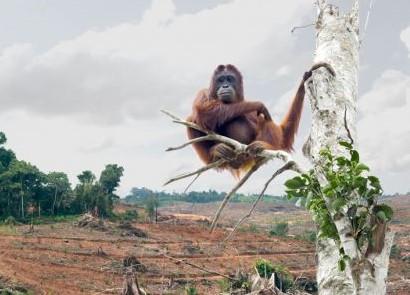
Orangutan means “man of the forest.” These animals are sometimes considered guardians of the forests, as their survival depends on the survival of their rainforest habitats. The picture above shows a Bornean orangutan sitting on top of one of the few remaining trees in its destroyed home, an area in Borneo that was deforested to be transformed into palm oil plantations. Between 1999 and 2015, the Bornean orangutan population declined by 148,500 monkeys due to habitat loss and poaching. This is particularly concerning as orangutans only exist in Borneo and Sumatra.
Bornean Orangutans Population Decline
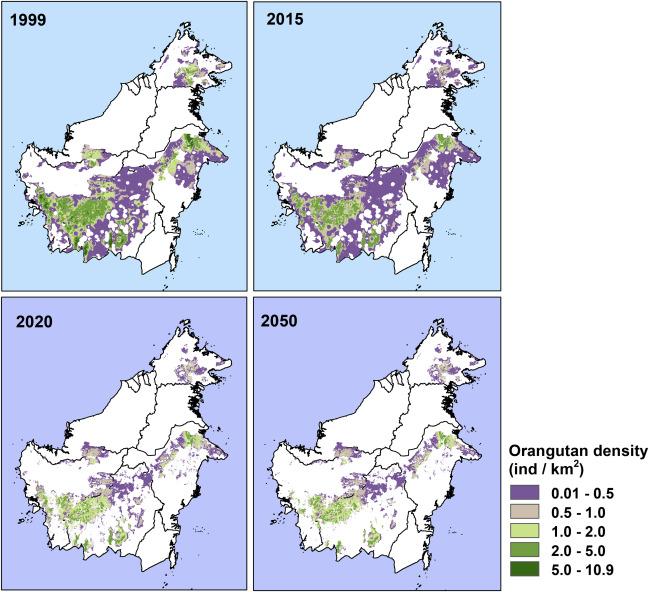
The map shows the decline of the orangutan population in Borneo throughout the decades. The population will continue to decline dramatically if destructive human activities such as logging, deforestation for palm oil plantations, poaching, and unsustainable infrastructure construction continue across the island. If the orangutan population continues to decline, several tall tree species in rainforests may go extinct, as orangutans are one of the primary distributors of tree seedlings in the Bornean rainforest.
Deforestation Map of Borneo
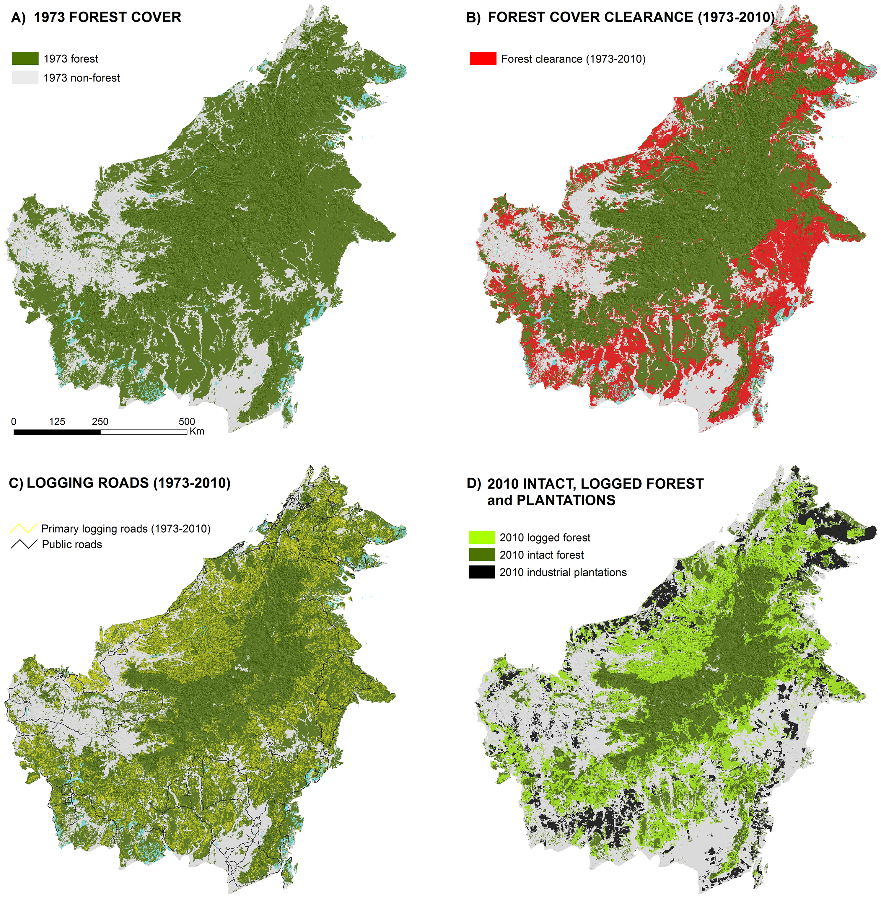
The map shows the decline of forest coverage in Borneo due to different human activities.
- In the 1970s, more than 50% of the island was intact forest.
- Deforestation increased significantly in the four-decade span after 1973.
- Public roads and logging roads were built across the island from 1973 to 2010.
- By 2010, the amount of intact forest remaining was much lower. Logged forest and industrial plantations have taken their place.
These images provide insight into the over-exploitation of natural resources that are contributing to widespread biodiversity loss in Borneo. Bornean rainforests have declined by approximately 30% in just four decades, which has resulted in habitat loss for thousands of terrestrial species, a reduction in the planet’s ability to sequester carbon, and a reduction in natural resources available for human’s sustainable use (such as medicinal flora).
Deforestation in the Amazon
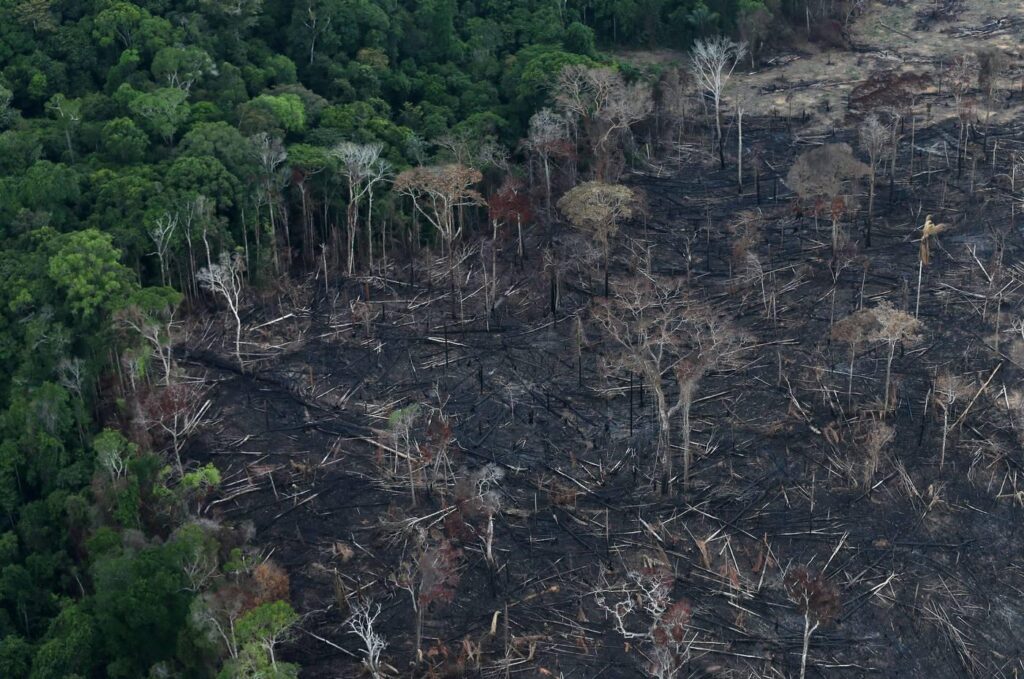
The Amazon rainforest is home to thousands of terrestrial species, from small insects to large mammals. The forest contains 80,000 flora species, half of which are vital for sustaining animal life in the forest. However, behind its rich and seemingly endless biodiversity, the Amazon rainforest has been suffering from biodiversity loss since the 1960s. This is due to several human activities that overexploit the natural resources of the forest. The image above shows an area of the Amazon rainforest burned and cleared by Itaituba farmers in Para, Brazil to make the land suitable for agriculture and cattle ranching. Deforestation not only reduces the amount of carbon the forest can sequester, which contributes to climate change, but also destroys huge amounts of plant biodiversity that supplies food and shelter to all species that live in the forest.
Elephant Population Loss
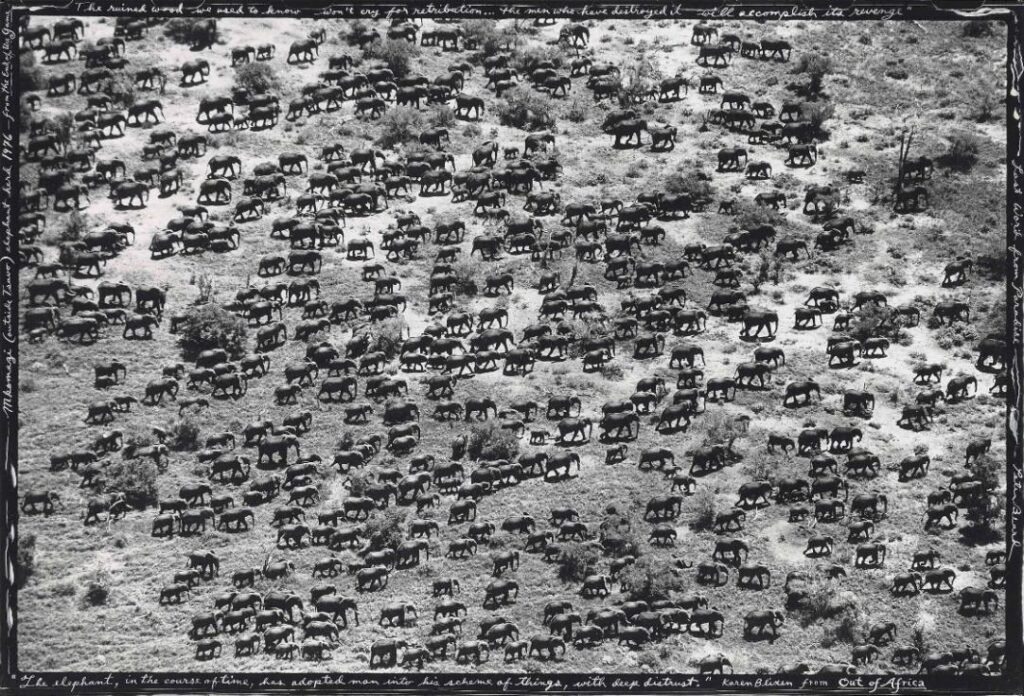
Source: Christies.com/Peter Beard
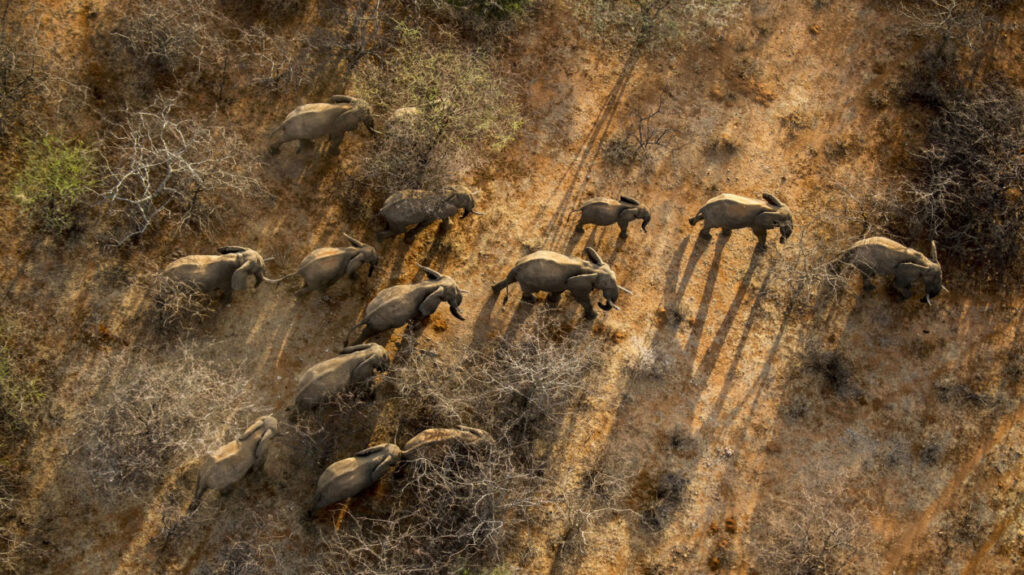
Source: Ami Vitale for The Nature Conservancy
The images above show an elephant herd in Kenya in the 1970s and a significantly smaller herd in Kenya in 2015. In the 1950s-1970s, the population of elephants in Africa reached up to 5 million, with elephant herds consisting of 100 – 200 elephants. Today, there are only about 6 – 20 elephants per herd. The population of African elephants and African forest elephants dropped significantly between 1979 to 1989 due to illegal poaching for ivory, which almost drove them to extinction. Today, there are only 415,000 African elephants in the world.
Although elephant population numbers are showing resilience, the absence of an abundant elephant population may lead to an ecological imbalance in areas where they used to thrive. For example, when elephants graze on vegetation, they maintain pathways in savannas, creating microhabitats for smaller animals, and contribute to the distribution of seeds, acting as “natural gardeners.”Without elephants, species that depend on these services may not survive.
Mass Coral Bleaching in the Great Barrier Reef
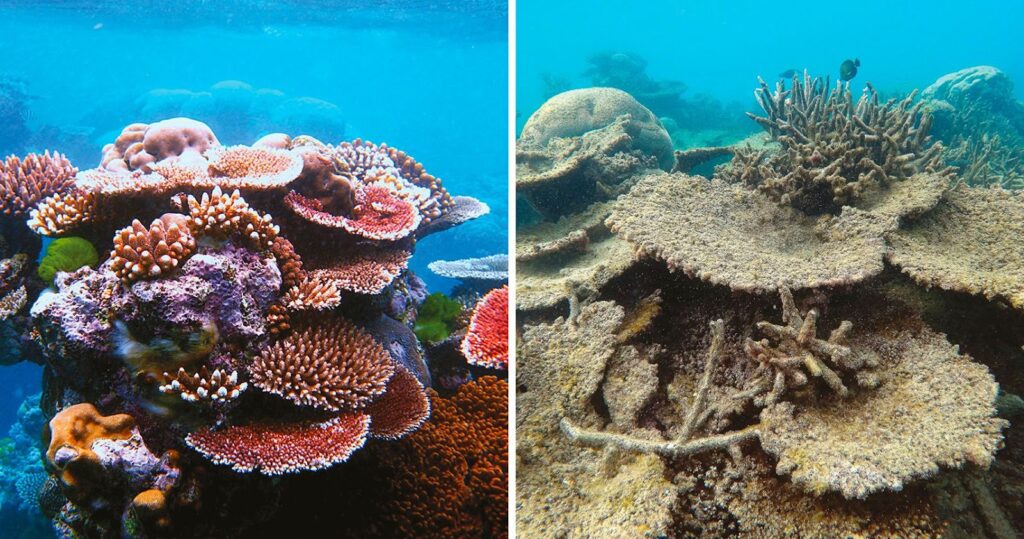
Source: The Travel
The image above shows a healthy coral compared to a bleached coral. Coral bleaching events have caused a tremendous loss of ocean biodiversity in recent years; the Great Barrier Reef has seen four mass coral bleaching events since 2016. Coral reefs are an essential part of the ocean. In fact, the Great Barrier Reef alone is home to thousands of marine and avian species ranging from mollusks to the biggest marine mammals on the planet, whales. All of these species rely on coral for various services such as shelter, food, nesting grounds, and more. Massive bleaching events can cause a chain reaction of biodiversity loss in a wide variety of species.
Overfishing of Sharks
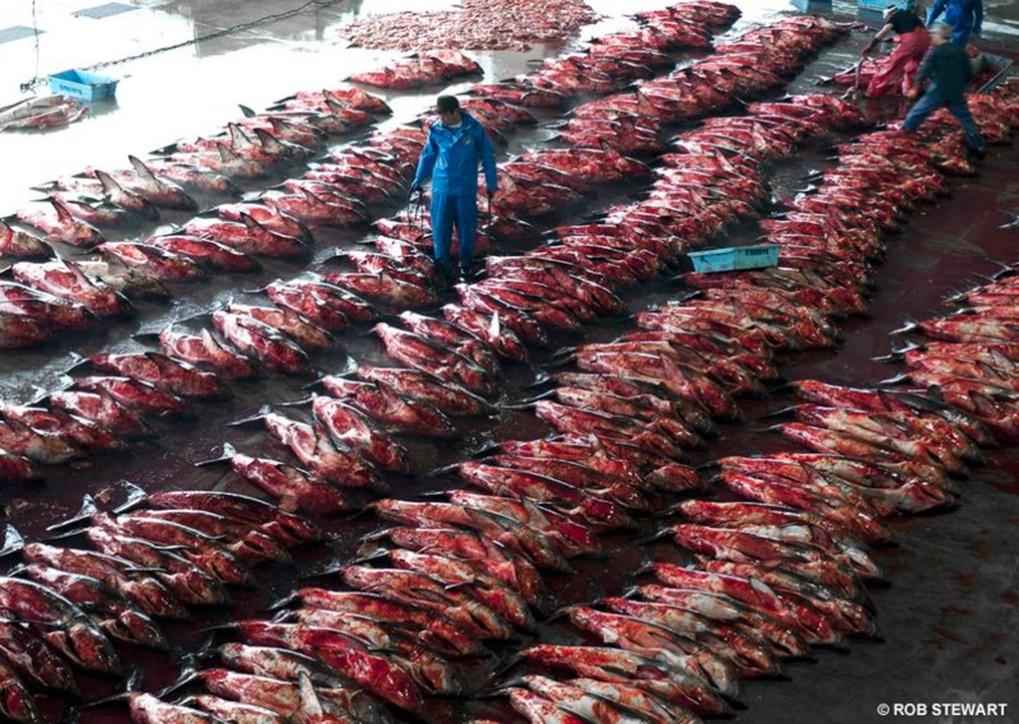
Sharks are one of the most important species in the ocean because they are major predators that maintain the balance of marine life. Acting as population controllers, sharks ensure that other fish species and invasive species are not overpopulated. This helps to prevent the destruction of coral reefs. Additionally, shark fecal deposits are an essential nutrient supply for coral and other species.
Despite sharks’ importance to maintaining a balanced food web, people have been exploiting sharks for their fins for many years. The image above shows shark overfishing due to the increasing demand for shark fin dishes in Asian countries, such as Hongkong, Singapore, and Taiwan. Surprisingly, European Union countries, including Spain, Portugal, France, Italy, and the Netherlands are the primary suppliers of shark fins to these Asian countries. Between 1970 and 2021, ray and shark populations declined by 70% as a result of overfishing. A smaller shark population works to destabilize the ocean food chain, which can lead to other marine ecological imbalances such as an increase in the population of larger predatory fish and a decline in the population of smaller algae-eating fish species that help to maintain healthy coral reef conditions.
Birds Population Decline in North America
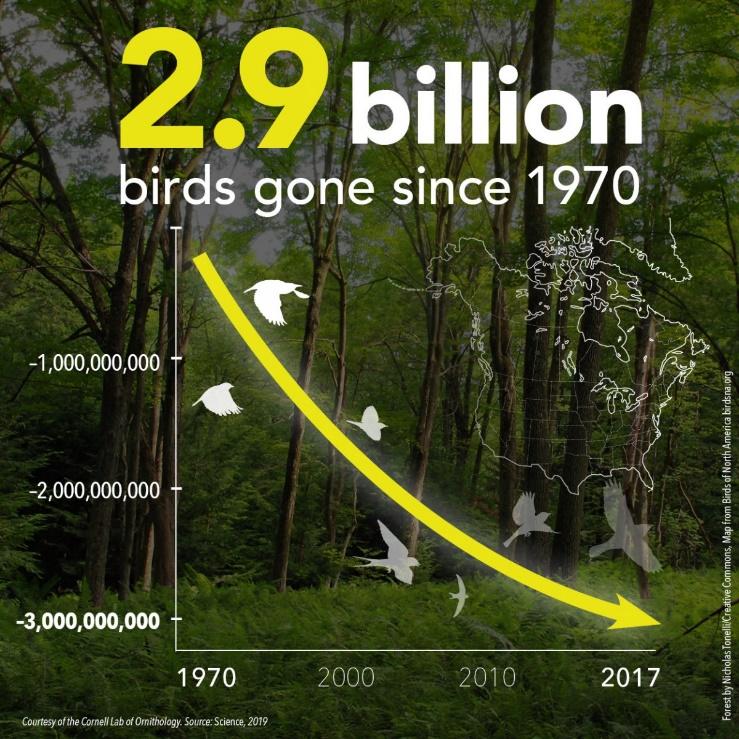
North America’s bird population has been declining steadily since 1970 as a result of human-caused habitat destruction. For example, changing land use, such as converting grasslands for agricultural use and urbanization, results in habitat loss and a scarcity of food sources for birds such as insects and larvae. According to the graph above, North America has lost 2.9 billion adult birds since 1970, with birds that live in forests accounting for one billion of those losses. This represents a nearly 30% decline in bird populations.
The absence of birds can affect the ecosystem in addition to human health. For example, small birds that feed on flower nectar are important pollinators, while others distribute seeds, contributing to an area’s plant biodiversity. Birds also help with pest control (and thus disease control) by eating insects that may carry diseases.